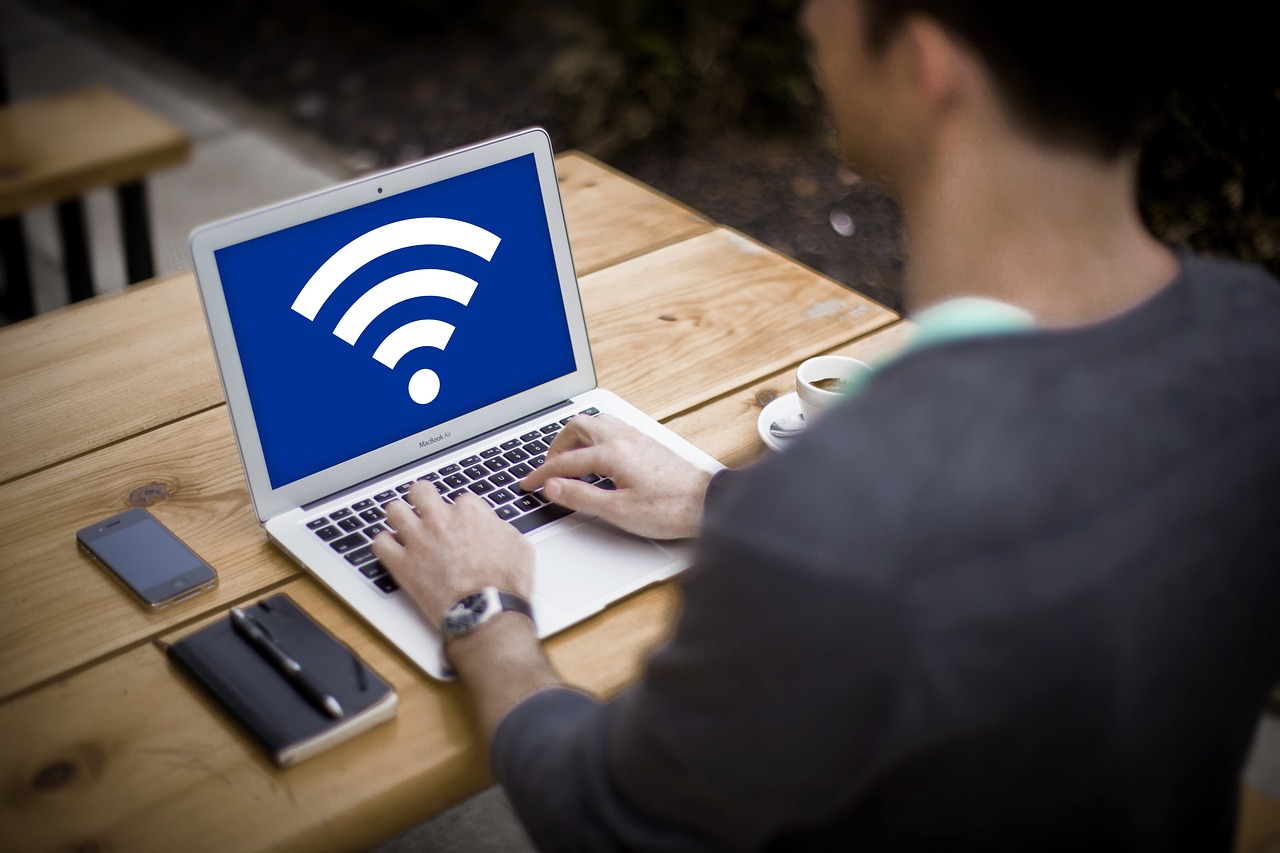
In today’s connected world, having access to the internet is essential to most daily activities. From work to school, to entertainment and staying in touch with friends and family, having a reliable internet connection is key. Unfortunately, laptops, notebooks, and other mobile devices often have difficulty connecting to the internet. Understanding the most common internet connection issues can help you troubleshoot and fix the problem quickly and easily.
Content of the page
Maybe your laptop is connected by still not internet?
The Importance of Internet Connectivity
The internet has become an integral part of our daily lives. We rely on it for work, school, entertainment, communication, and more. Without a reliable internet connection, many of our activities become difficult or impossible. It is important to understand the common internet connection issues that can affect your laptop so that you can identify and fix them quickly.
Types of Internet Connections
There are several types of internet connections available, depending on your location and the type of service you have. The most common types of internet connections are Wi-Fi and cellular. Wi-Fi is the most common type of internet connection and is often available in public places such as coffee shops, airports, hotels, and even your own home. Cellular connections are becoming increasingly popular, especially for laptops and notebooks, as they are often more reliable and have better coverage than Wi-Fi.
Identifying the Problem
When you encounter issues with your laptop’s internet connection, the first step is to identify the problem. Common issues include poor signal strength, slow connection speeds, and intermittent connection drops. You can use a variety of tools to help identify the cause of the problem. For example, a Wi-Fi signal strength meter can help you determine if the problem is related to the signal strength or range of your Wi-Fi connection. If the problem is related to your cellular connection, you can use a mobile network speed test to determine if the problem is related to the speed or reliability of your cellular connection. Once you have identified the cause of the problem, you can begin troubleshooting the issue.
Troubleshooting Network Connectivity

Having trouble connecting your laptop to the internet? This is a frustrating problem that can have many possible causes. Fortunately, it is possible to troubleshoot and resolve most internet connectivity issues. Here is a step-by-step guide to help you get back online.
Step 1: Checking Physical Connections
The first step to troubleshooting any internet connection issue is to check the physical connections. Make sure all cables, power supply, and other components are securely connected and powered on and that all parts all working.
Inspecting Ethernet Cables
If you are using an Ethernet cable to connect to the internet, check that the cable is securely connected to the laptop and to the router or modem. Make sure the cable is not damaged or frayed. If you are using a splitter, also make sure that it is correctly connected.
Verifying Wi-Fi Adapter Status
If you are using a Wi-Fi connection, make sure that the Wi-Fi adapter is enabled on your laptop. To check this, open the Device Manager and look for the Wi-Fi adapter under the Network Adapters category. If the Wi-Fi adapter is disabled, right-click on it and select Enable.
Step 2: Restarting the Devices
Sometimes a simple restart of your laptop and router can solve the problem.
Rebooting the Laptop
To restart your laptop, click on the Start menu, select Power, and then click Restart.
Power Cycling the Modem and Router
To power cycle your modem and router, unplug the power cable from both devices. Then wait at least one minute before plugging the power cable back into the modem. Allow the modem to fully restart before plugging the power cable back into the router.
Step 3: Diagnosing Network Issues
If restarting the devices didn’t fix the issue, it is time to run some tests to diagnose the problem.
Running Network Troubleshooters
Windows 10 includes several troubleshooters that can help diagnose and resolve network issues. To access these troubleshooters, open the Settings app, select Update & Security, and then select Troubleshoot. Select the appropriate troubleshooter from the list and follow the on-screen instructions to diagnose and resolve any network issues.
Checking IP Configuration
If the troubleshooter didn’t find anything wrong, it is time to check the IP configuration. To do this, open the Command Prompt and type the command “ipconfig /all”. This will output the IP address configuration of your laptop. Make sure that the IP address is valid and that the DNS servers are configured correctly.
Step 4: Resetting Network Settings
If all else fails, it may be necessary to reset the network settings on your laptop.
Resetting TCP/IP Stack
To reset the TCP/IP stack, open the Command Prompt and type the command “netsh int ip reset”. This will reset all TCP/IP settings on your laptop.
Resetting Wi-Fi Settings
To reset the Wi-Fi settings, open the Settings app, select Network & Internet, select Wi-Fi, and then select Manage Known Networks. Select the network you are trying to connect to and then select Forget. This will remove the saved Wi-Fi settings for that network and allow you to connect to it again.
Hopefully, one of the steps above has helped you get your laptop back online. If you are still having trouble, it may be best to contact a professional for help.
Fixing Software and Driver Related Problems
When a laptop is not connecting to the internet, the issue is often related to software and drivers. A laptop user may need to update their network drivers, disable VPN and proxy settings, and manage firewall and antivirus software.
Updating Network Drivers
Network drivers are responsible for enabling the laptop to communicate with the internet. If the drivers are out of date, the laptop may not be able to access the internet. To check if the drivers need to be updated, open the device manager by right-clicking the start button and selecting “Device Manager” from the menu. Expand the “Network adapters” section and check if there is a yellow exclamation mark on any of the drivers. If so, right-click the driver and select “Update driver.”
Disabling VPN and Proxy Settings
If a laptop is connected to a Virtual Private Network (VPN) or a proxy server, it may be unable to connect to the internet. To disable these settings, open the network settings by clicking the start button and selecting “Settings” from the menu. Select the “Network & Internet” tab and click “Proxy” in the left-hand menu. If a proxy server or VPN is enabled, click the “Disconnect” button and try to connect to the internet again.
Managing Firewall and Antivirus Software
Firewall and antivirus software can also interfere with a laptop’s internet connection. To ensure that these programs are not blocking the internet, open the security settings by right-clicking the start button and selecting “Security and Maintenance” from the menu. Expand the “Security” tab and click “Windows Firewall” in the left-hand menu. Ensure that the firewall is enabled and that all of the options are configured correctly.
Dealing with Router Configuration Issues
If the laptop is connected to a router, the router may be configured incorrectly, preventing the laptop from accessing the internet. To check the router’s settings, the user may need to access the router’s admin panel.
Accessing the Router’s Admin Panel
The router’s admin panel can be accessed by typing the router’s IP address into a web browser. The IP address is typically written on the router itself or in the router’s user manual. If the IP address is not known, the user can try to find it by typing “ipconfig” into the command prompt. Once the IP address is known, type it into a web browser and enter the router’s username and password.
Verifying Wi-Fi Settings
Once connected to the router’s admin panel, the user should check the Wi-Fi settings. Ensure that the Wi-Fi network is enabled, and that the security settings are configured correctly. If the router is using an outdated security protocol, update it to the most secure option.
Changing DNS Servers
The user should also check the DNS server settings. If the DNS servers are not set correctly, the laptop may not be able to connect to the internet. To change the DNS server settings, select the “Network” tab in the router’s admin panel and enter the desired DNS server IP addresses.
Resolving Specific Internet Connection Problems

The following sections address some of the most common internet connection problems that laptop users may encounter.
Wi-Fi Connection Dropping Frequently
If the laptop is losing its connection to the router frequently, the user should check the router’s signal strength. If the signal strength is weak, the user should move the router closer to the laptop, or consider using a Wi-Fi range extender. Additionally, the user should check the router’s Wi-Fi settings and ensure that the channel is set to the least congested option.
No Internet Access, but Wi-Fi Connected
If the laptop is connected to the Wi-Fi network but cannot access the internet, the user should check the router’s connection status. If the router is connected to the internet, the user should check the laptop’s network settings and ensure that the DNS servers are set correctly. If the DNS settings are correct, the user should try to disable the firewall and antivirus software temporarily.
Unable to Connect to Specific Websites
If the laptop is unable to access specific websites, the user should check the router’s DNS settings. If the router is using an external DNS server, the user should try to switch to a different server. Additionally, the user should check their antivirus and firewall software and ensure that the websites are not being blocked.
Slow Internet Speeds
If the internet connection is slow, the user should check the router’s signal strength and Wi-Fi channel. Additionally, the user should check the router’s bandwidth settings and ensure that the bandwidth is not being limited. Finally, the user should check the internet service provider’s speed and ensure that the speeds are as promised.
IPv6 Connectivity Issues
IPv6 is the latest version of the internet protocol and is increasingly being used by websites and services. If the laptop is having trouble connecting to IPv6 websites and services, the user should check the router’s settings and ensure that IPv6 is enabled. Additionally, the user should check the network adapter’s settings and ensure that IPv6 is enabled.
Additional Tips and Considerations
Updating Firmware and Router Software
If the laptop is still having trouble connecting to the internet, the user should try to update the router’s firmware and software. This can be done by accessing the router’s admin panel and downloading the latest software version.
Performing a System Restore
If the laptop still cannot connect to the internet, the user should try to perform a system restore. This will restore the laptop to an earlier, working configuration and may resolve the issue.
Seeking Professional Help
If the laptop still cannot connect to the internet, the user should consider seeking professional help. A qualified technician may be able to identify and resolve the issue quickly.
Conclusion
Ensuring a Stable and Reliable Internet Connection
If a laptop is not connecting to the internet, the issue is often related to software and drivers. A laptop user may need to update their network drivers, disable VPN and proxy settings, and manage firewall and antivirus software. Additionally, the user should check the router’s settings, such as the Wi-Fi settings and DNS server settings. If the laptop is still not connecting to the internet, the user should consider performing a system restore or seeking professional help. By following these steps, laptop users can ensure a stable and reliable internet connection.
